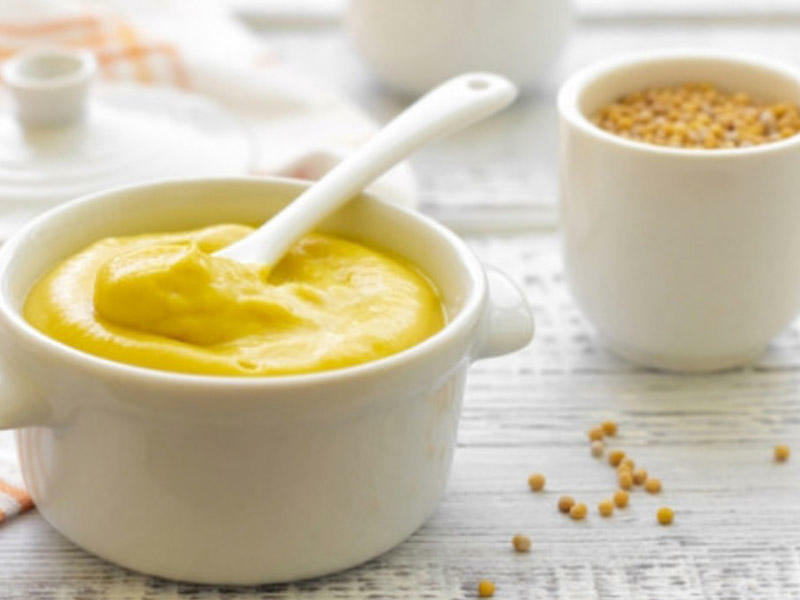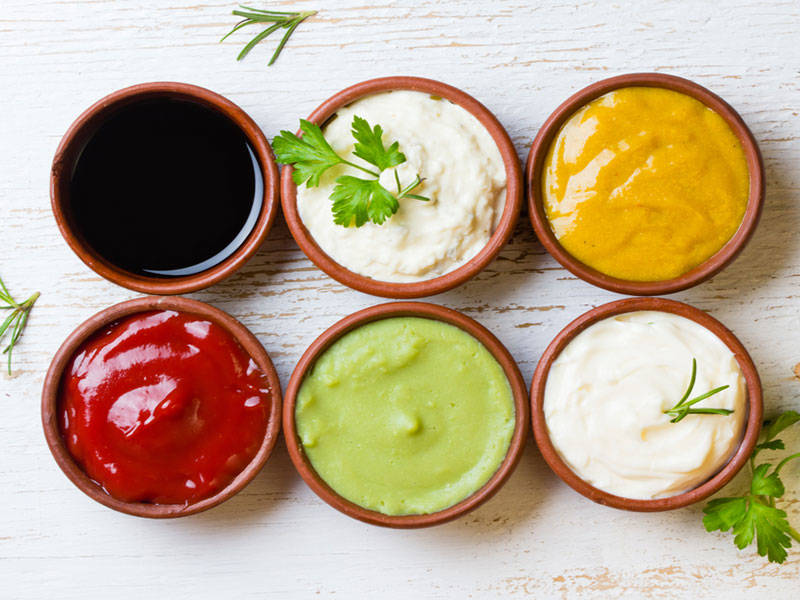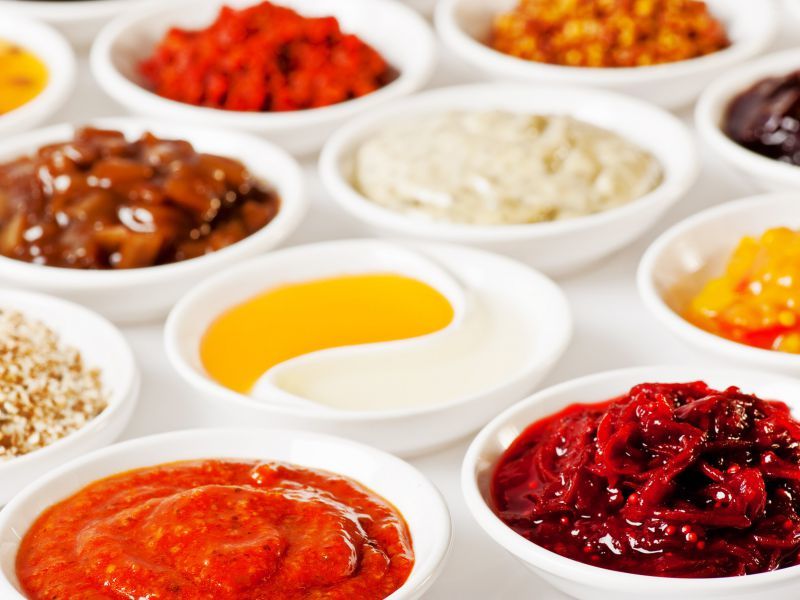An Essential Guide
Introduction:
Tomato paste and tomato sauce are two commonly used ingredients that add flavor, color, and texture to a wide variety of dishes across the globe. Derived from tomatoes, these condiments offer a convenient and versatile solution to enhance the taste of various culinary creations.
This article aims to provide an in-depth understanding of tomato paste and sauce, exploring their production process, similarities, differences, culinary uses, health benefits, and popular recipes. Whether you’re a professional chef or a home cook, this comprehensive guide will help you make informed decisions when incorporating these tomato-based products into your recipes.
Understanding Tomato Paste:
Tomato paste is made by cooking tomatoes for an extended period, followed by straining and removing the skin and seeds. The resulting concentrated tomato puree is then cooked further to reduce moisture content, resulting in a thick consistency with an intense flavor. Tomato paste is typically available in cans or tubes, with varying concentrations.
Key characteristics of tomato paste include:
1. Intense flavor: Tomato paste is rich and concentrated, offering a deep, bold flavor that can enhance the taste of sauces, soups, stews, and marinades.
2. Thick texture: The reduction process gives tomato paste a thick and smooth consistency, making it ideal for thickening sauces and imparting a rich tomato flavor.
Culinary Uses of Tomato Paste:
Tomato paste is a staple ingredient in many cuisines around the world. Some common culinary uses of tomato paste include:
1. Tomato-based sauces: Tomato paste forms the base for a variety of sauces, such as marinara, Bolognese, and puttanesca. It adds a rich, savory flavor and vibrant red color to these dishes.
2. Soups and stews: Tomato paste acts as a flavor enhancer, providing a concentrated tomato taste to soups, stews, and chilies.
3. Marinades and dressings: Tomato paste can be combined with other ingredients to create flavorful marinades for meats, poultry, and vegetables. It can also be used in salad dressings to add depth and tanginess.
Understanding Tomato Sauce:
Tomato sauce, sometimes referred to as tomato puree, is a smooth sauce made from tomatoes that have been cooked down and strained to remove seeds and skin. Unlike tomato paste, the sauce is not reduced to the same thickness. Tomato sauce is commonly sold in jars and cans, with variations in consistency, texture, and additional ingredients.
Key characteristics of tomato sauce include:
1. Smooth consistency: Tomato sauce possesses a relatively thinner consistency compared to tomato paste. It is pourable and can easily coat other ingredients.
2. Balanced flavor: Tomato sauce offers a milder and sweeter flavor compared to tomato paste, making it a versatile ingredient suitable for a wide range of dishes.

Culinary Uses of Tomato Sauce:
Tomato sauce finds numerous applications in various cuisines worldwide. Some common culinary uses of tomato sauce include:
1. Pasta dishes: Tomato sauce serves as the foundational base for classic pasta dishes like spaghetti, lasagna, and penne pomodoro.
2. Pizza and flatbreads: Tomato sauce acts as a vital component of pizza toppings, providing a tangy and savory flavor to complement the crust and toppings.
3. Dips and spreads: Tomato sauce can be used as a versatile dip or spread, accompanying dishes like breadsticks, fries, and sandwiches.
Differences Between Tomato Paste and Sauce:
While tomato paste and sauce are derived from tomatoes and share similar characteristics, there are some distinct differences between the two:
1. Consistency: Tomato paste is thicker and more concentrated, while tomato sauce is smoother and more pourable.
2. Flavor intensity: Tomato paste has a bolder and more concentrated flavor, whereas tomato sauce offers a milder and sweeter taste.
3. Culinary uses: Tomato paste is primarily used as a flavor enhancer and a thickening agent in sauces, soups, and stews. Tomato sauce, on the other hand, is commonly used as a base for pasta dishes, pizzas, and various other recipes that require a saucy texture.
Health Benefits of Tomato Paste and Sauce:
Tomatoes are rich in nutrients and antioxidants, and both tomato paste and sauce offer several health benefits. Some key benefits include:
1. Antioxidant properties: Tomatoes contain lycopene, a potent antioxidant associated with a reduced risk of certain cancers and heart diseases.
2. Vitamins and minerals: Tomato paste and sauce provide essential vitamins A, C, and K, as well as minerals like potassium.
3. Digestive health: The fiber content in tomatoes aids digestion and promotes a healthy gut.
Popular Recipes:
1. Classic Marinara Sauce:
Ingredients: Olive oil, onion, garlic, canned tomato sauce, tomato paste, Italian herbs, sugar, salt, and pepper.
Instructions: Saute onions and garlic in olive oil, add tomato paste and sauce, stir in herbs, sugar, salt, and pepper, simmer for 20 minutes, and serve with pasta.
2. Homemade Tomato Soup:

Ingredients: Butter, onion, garlic, canned tomato sauce, tomato paste, vegetable broth, cream, sugar, salt, and pepper.
Instructions: Saute onions and garlic in butter, add tomato paste and sauce, pour in vegetable broth, simmer for 15 minutes, blend the mixture, stir in cream, sugar, salt, and pepper, and serve hot.
Conclusion:
Tomato paste and tomato sauce are essential ingredients in many recipes, offering unique flavors, colors, and textures to dishes. While tomato paste provides concentrated richness, tomato sauce offers a more versatile consistency. Understanding the differences and culinary uses of these tomato-based condiments will empower you to make informed choices in your culinary creations. Incorporate tomato paste and sauce into your recipes to elevate your dishes’ flavors and enjoy the numerous health benefits they provide.1. Production Process and Supply Chain:
The production process of tomato paste and sauce begins with the harvesting of ripe tomatoes. After harvesting, the tomatoes are thoroughly washed to remove any dirt or debris. They are then peeled, and the seeds are removed to create a smooth and consistent product.
Once the tomatoes are prepared, they are cooked down to reduce moisture content and increase flavor concentration. This step involves simmering the tomato puree over a low heat for several hours until it reaches the desired thickness. The mixture is regularly stirred to prevent burning or sticking.
After the reduction process, the tomato paste or sauce is strained to remove any remaining seeds or skins. The final product is then packaged and sealed in cans, jars, or tubes, ready for distribution and sale.
The supply chain for tomato paste and sauce involves multiple stakeholders, including tomato farmers, producers, distributors, and retailers. Tomatoes are grown in various regions around the world, with major producers located in countries like China, Italy, the United States, and Brazil. The processed tomato products are then transported to distribution centers and eventually reach retailers and consumers.
2. Market Analysis:
The global market for tomato paste and sauce has experienced steady growth in recent years. The demand for these products is driven by their versatility in various cuisines, increasing consumer preference for convenience foods, and the rising awareness of health benefits associated with tomatoes.
The market is characterized by the presence of both established multinational companies and small-scale local producers. Major players in the industry include The Kraft Heinz Company, Del Monte Foods Inc., Conagra Brands Inc., and Barilla Group. These companies offer a wide range of tomato-based products to cater to different consumer preferences.
The market is segmented based on product type, packaging type, distribution channel, and geography. Product types include tomato paste, tomato sauce, tomato puree, and others. Packaging types range from cans and jars to tubes and sachets. Distribution channels include supermarkets, hypermarkets, convenience stores, e-commerce platforms, and foodservice providers.
North America and Europe are the largest consumers of tomato paste and sauce, given the popularity of Italian and Mediterranean cuisines in these regions. However, there is also a growing market in Asia-Pacific, Latin America, and the Middle East, as consumers embrace international cuisines and convenience foods.
3. Competitive Landscape:
The tomato paste and sauce industry are highly competitive, with numerous players vying for market share. Companies strive to differentiate themselves through product innovation, quality, packaging, and branding.
Established brands often focus on expanding their product portfolio by introducing new flavors, organic options, and healthier variants. They also invest in marketing campaigns to create brand awareness and engage with consumers through various channels, including social media and influencer marketing.
In addition to established brands, there is a growing trend of local and artisanal producers entering the market. These smaller players often emphasize their use of locally sourced tomatoes, traditional production methods, and unique recipes to attract consumers seeking authentic and artisanal products.
4. Consumer Trends and Preferences:
Consumer preferences in the tomato paste and sauce market are influenced by several trends and factors. Health-conscious consumers are increasingly seeking products made from natural and high-quality ingredients. Organic and non-GMO variants are gaining popularity as consumers prioritize sustainable and environmentally friendly options.
Convenience plays a significant role in consumer decision-making. Ready-to-use tomato paste and sauce products that save time in meal preparation are highly sought after. Single-serve packaging options, such as tubes and sachets, are also favored by consumers who prefer portion control and on-the-go convenience.

Flavor diversity is another important factor driving consumer choices. Manufacturers have responded to this trend by introducing new flavors, such as spicy, smoky, and herb-infused tomato paste and sauce options. Ethnic and regional flavors are also gaining traction as consumers look to experiment with different cuisines.
5. Innovation and Product Development:
To stay competitive in the market, manufacturers continuously invest in research and development to introduce new products and improve existing ones. Innovation in packaging plays a crucial role, as companies strive to offer convenient and user-friendly options, such as resealable jars, squeeze tubes, and portion-controlled packaging.
Product development efforts focus on meeting evolving consumer demands, such as reduced sugar or salt options, gluten-free variants, and allergen-free formulas. Manufacturers also explore novel ingredients and flavor combinations to create unique and distinctive tomato paste and sauce products.
Technological advancements in food processing and preservation techniques have also enabled manufacturers to develop products with extended shelf life while maintaining freshness and quality.
6. Foodservice and Commercial Applications:
The foodservice industry is a significant consumer of tomato paste and sauce products. Restaurants, catering businesses, and food manufacturers rely on these condiments to create flavorful and consistent dishes. Bulk packaging options cater to the specific needs of the foodservice sector, ensuring efficient and cost-effective operations.
Commercial applications extend beyond the food industry, with tomato paste and sauce finding their way into various non-food products. They are commonly used in the manufacturing of canned soups, ready meals, pizza toppings, condiments, and even cosmetics products like facial masks and hair treatments.
7. Sustainability and Environmental Impact:
As consumers become more environmentally conscious, sustainability practices in the tomato paste and sauce industry are gaining importance. This includes sustainable sourcing of tomatoes, reducing water usage in production processes, and implementing efficient waste management systems.
Some manufacturers are also exploring innovative packaging solutions to minimize plastic waste, such as eco-friendly materials and recyclable packaging options. Additionally, initiatives to support local tomato farmers and promote fair trade practices are becoming increasingly prevalent in the industry.
8. Regulatory and Quality Standards:
The production of tomato paste and sauce is subject to various regulatory and quality standards imposed by government bodies and industry associations. These standards ensure the safety, quality, and integrity of the products throughout the supply chain.
Manufacturers must comply with food safety regulations, including guidelines for hygiene, sanitation, labeling, and traceability. They are also subject to regular inspections and audits to maintain compliance with industry standards and certifications.
9. Export and Global Trade:
Tomato paste and sauce are widely traded commodities, with numerous countries involved in both import and export activities. Countries with an abundance of tomatoes, such as China, Italy, the United States, and Spain, are major exporters of tomato-based products.
Global trade of tomato paste and sauce is influenced by factors such as price fluctuations, crop yields, global demand, and trade agreements. Developing countries often rely on exporting their tomato products to generate revenue and contribute to their economies.
10. Challenges and Future Outlook:
The tomato paste and sauce industry face several challenges, including fluctuations in tomato crop yields due to weather conditions, increasing production costs, and changing consumer preferences. Other challenges include maintaining consistent quality, managing supply chain logistics, and addressing food safety concerns.
However, the future outlook for the industry remains positive. The demand for tomato-based products is expected to increase further as consumers continue to explore international cuisines, seek convenience in meal preparation, and prioritize healthier food options. Manufacturers that can adapt to changing consumer needs, embrace innovation, and demonstrate commitment to sustainability are likely to thrive in the evolving market.

Conclusion:
Tomato paste and sauce are versatile and essential ingredients in the culinary world. With their rich flavors, vibrant colors, and numerous applications, they enhance the taste of a wide range of dishes. The market for tomato paste and sauce is competitive, driven by factors such as consumer preferences, convenience, flavor diversity, and health consciousness. As the industry continues to innovate, embrace sustainability practices, and meet changing consumer demands, the future holds promising opportunities for growth and development in this segment.









